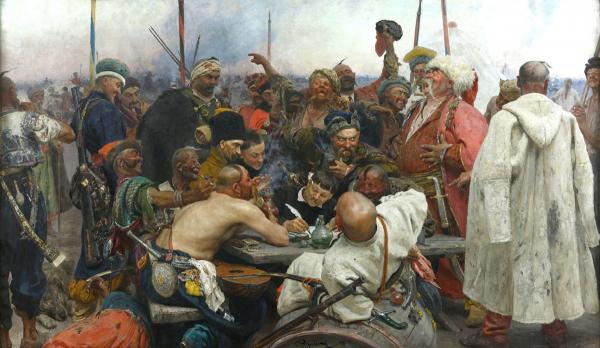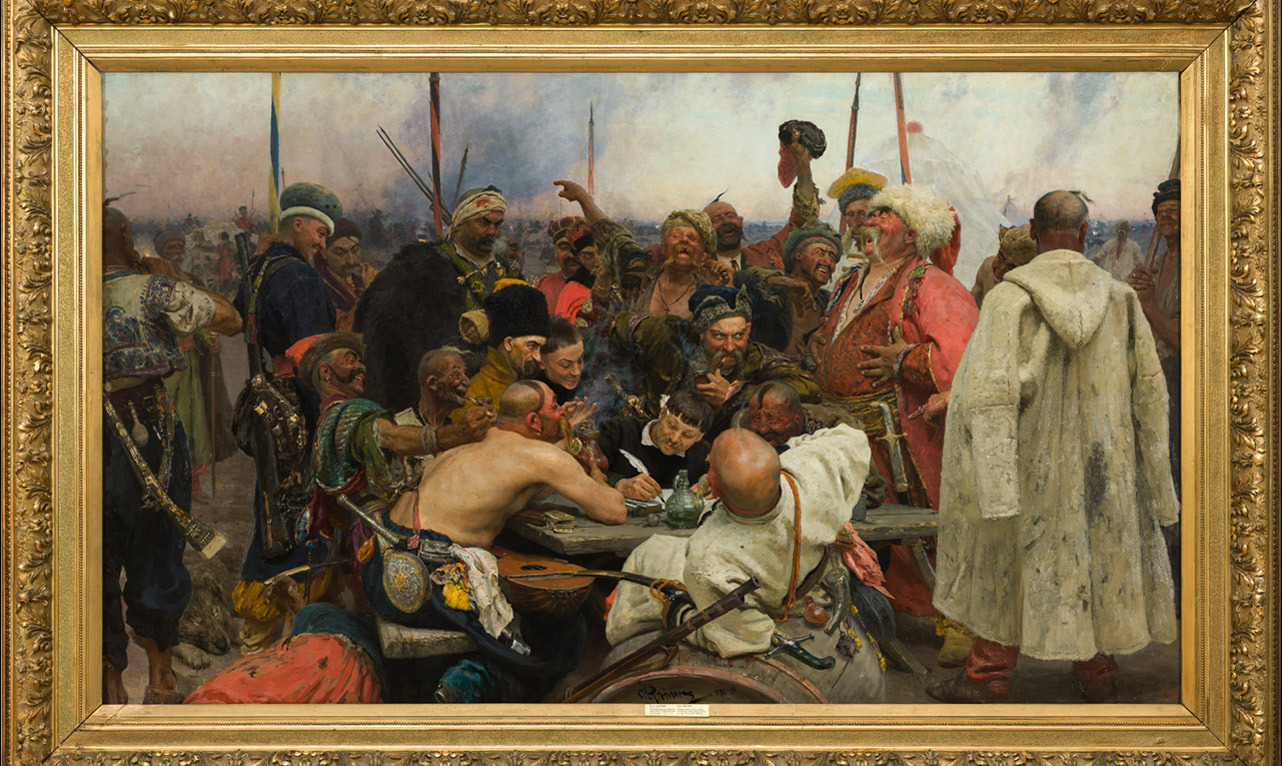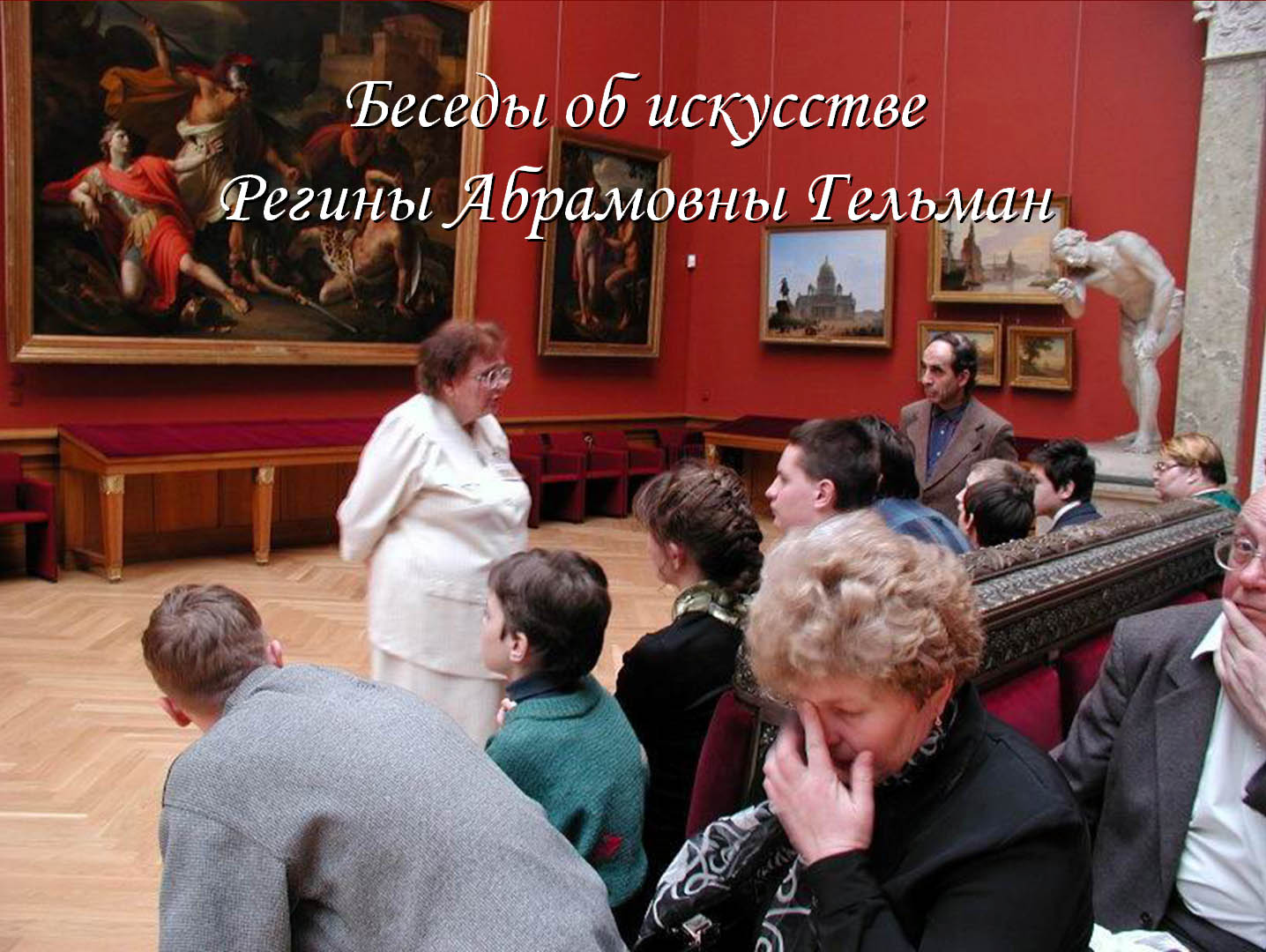Zaporozhian Cossacks
1880–91
- oil on canvas. 203 x 358
- Ж-4005
Received in 1897-
Сведения о реставрации:
Реставраторы:: Бриндаров А.Б., Райков П.В. (1950-е–1960-е)
Ilya Repin painted some of his finest works in the 1880s, including this monumental canvas, which was only completed in 1891. The sound of different forms of laughter issuing from the painting captures the proud and independent natures of the Zaporozhian Cossacks. Zaporozhia was the name of the military and political organization of the Ukrainian Cossacks and their autonomous territory (approximately eighty thousand square kilometres) in the south of the country from the mid-sixteenth century to 1775, when the host was officially abolished by Catherine the Great. The name is derived from the territory’s location «beyond the rapids» (zaporozhamy). The Zaporozhian Cossacks gained renown in the late fifteenth century as defenders of the Lithuanian-Ruthenian state against the Crimean Tatars, while living as free brigands in the uncolonised steppe frontier of the Polish state.
In 1675, Sultan Muhammad IV of Turkey allegedly sent the Zaporozhian Cossacks a threatening letter, advising them to surrender «voluntarily and without any resistance.» In response, they composed a sarcastic letter, full of humour and scorn, promising «to fight on land and water.» Inspired by this legend, Ilya Repin made his first sketch for a painting on the subject in 1878. He spent thirteen years working on the picture, studying the history and way of life of the Zaporozhian Host, visiting the Ukraine, collecting folk legends and reading archive documents and history books. The artist masterly conveys the free-loving spirit and daring natures of the Cossacks, headed by Ataman Ivan Sirko. The various images were based on studies of concrete people, whom Repin transformed on canvas. The distinctive drawing and technical mastery contribute to an unusually lifelike scene, reminiscent of the works of Diego Velázquez or Frans Hals. The artist was awarded gold medals for this painting at the international exhibitions in Munich and Budapest in 1895. The picture was acquired by Tsar Alexander III and hung in the Winter Palace until 1897, when Tsar Nicholas II donated it to the Russian Museum. Russian Museum: From Icons to the Modern Times. Palace Editions, St Petersburg, 2015. P. 208.



